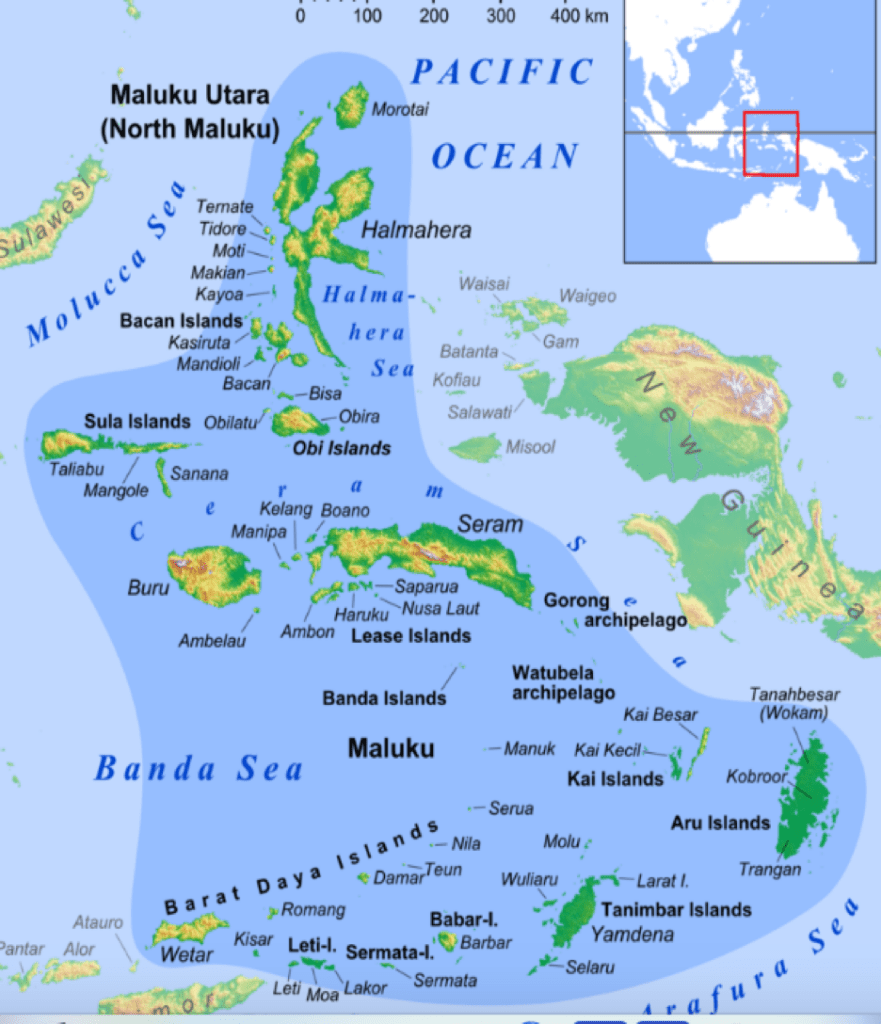Daniel Salzler No. 1113
EnviroInsight.org Eight Items September 3, 2021
—————Feel Free To Pass This Along To Others——————
If your watershed is doing something you would like others to know about, or you know of something others can benefit from, let me know and I will place it in this Information newsletter.
If you want to be removed from the distribution list, please let me know.
Please note that all meetings listed are open.
Enhance your viewing by downloading the pdf file to view photos, etc. The attached is all about improving life in the watershed. If you want to be removed from the distribution list, please let me know. Please note that all meetings listed are open.
Enhance your viewing by downloading the attached pdf file to view photos, etc.
The attached is all about improving life in the watershed.
Read this newsletter at EnviroInsight.org
1. Another “Green” Way To Erradicate Weeds. Green Gobbler weed killer. Controls & eliminates annual & perennial weeds and grasses

Derived from corn
OMRI-listed and approved for organic use
Free of sulphates, bleach, dyes or chloride
Does NOT contain glyphosate
Eco-Friendly because it’s biodegradable
Green Gobbler’s 20% Vinegar Weed Killer packs a punch. Use it to kill all types of weeds, including dandelions, crabgrass, and other annual and perennial weeds. Our vinegar is approved for organic use and OMRI-Listed. OMRI is short for “Organic Materials Review Institute, and this group helps dictate what farmers and growers can consider “truly organic”.
It is eco-friendly because it is biodegradable, meaning it will promptly degrade in soil. Our 20% Vinegar is a non-selective herbicide derived from corn. With this mighty formula, you can control weeds and grasses without using synthetic chemicals like glyphosate. Source: https://grass-killer.com/reviews/green-gobbler-weed-killer-review/#:~:text= Green%20Gobbler%20Weed%20Killer%20is%20a%20vinegar-based%20herbicide,can%20stick %20directly%20to%20the%20weed%20killer%20jug.
2. Research Shows That Coffee Daily Consumed May Reduce Risk of Stroke and Fatal Heart Disease. Up to three cups of coffee per day is associated with a lower risk of stroke and fatal heart disease, according to research presented at ESC Congress 2021.1,2
“To our knowledge, this is the largest study to systematically assess the cardiovascular effects of regular coffee consumption in a population without diagnosed heart disease,” said study author Dr. Judit Simon, of the Heart and Vascular Centre, Semmelweis University, Budapest, Hungary.

“Our results suggest that regular coffee consumption is safe, as even high daily intake was not associated with adverse cardiovascular outcomes and all-cause mortality after a follow-up of 10 to 15 years,” she continued. “Moreover, 0.5 to 3 cups of coffee per day was independently associated with lower risks of stroke, death from cardiovascular disease, and death from any cause.” To read more, go to European Society of Cardiology. “Light-to-moderate coffee drinking associated with health benefits.” ScienceDaily. ScienceDaily, 30 August 2021. <www.sciencedaily.com/releases/2021/08/210830075619.htm>
3. Protect Yours Or Your Workers Hands From Cuts And Punctures. The right PPE for hands subjected to cuts and or punctures may be found at superiorgloves.com

4. Common Pesticide May Contribute To Global Obesity Crisis. Researchers discovered that chlorpyrifos, which is banned for use on foods in Canada but widely sprayed on fruits and vegetables in many other parts of the world, slows down the burning of calories in the brown adipose tissue of mice. Reducing this burning of calories, a process known as diet-induced thermogenesis, causes the body to store these extra calories, promoting obesity. Scientists made the discovery after studying 34 commonly used pesticides and herbicides in brown fat cells and testing the effects of chlorpyrifos in mice fed high calorie diets.
Read more: https://www.sciencedaily.com/releases/2021/08/210827184147.htm
5. Are You Prepared For A Flood?

A certificate of attendance will be offered.
Be better prepared for any flood event with consolidated data from sensors and systems to make more informed decisions—faster.
Join us and learn:
How to prepare for flood events using consolidated data from sensors and systems to make more informed decisions — faster
The importance of leveraging environmental data from reliable resources
What should be in your flood management toolbox?
6. To Make Or To Purchase Compost. “The main difference between backyard and commercial compost is the composition. Backyard compost is made from plant-based materials like vegetable scraps and coffee grounds because online tutorials recommend them. Additionally, animal-source materials are harder to compost. On the other hand, many of the commercial composts are made from farm manure,” said Yuqing Mao, a graduate student in the Nguyen lab.
Regardless of the source, the process of composting usually, but not always, gets rid of pathogens because it involves multiple stages of high heat. “There may be some pathogens that survive, either because they are heat resistant or they get introduced at a later stage,” Mao said.
The researchers collected samples of backyard compost from two gardeners at Urbana-Champaign and used six types of commercial compost, which were bought from the supermarket. They also used two control samples: soil that has never been treated with compost and immature compost, which has not been put through the high-temperature treatment. They extracted DNA samples and used qPCR (A real-time polymerase chain reaction technique of molecular biology based on the polymerase chain reaction) to
identify and measure the abundance of specific genes.
“We looked at airborne and foodborne pathogens. People are usually more concerned with the latter because they use the compost to grow vegetables,” Mao said. The researchers looked at the foodborne pathogens Escherichia coli and Salmonella enterica and the airborne pathogens Mycobacterium spp., Legionellapneumophila, and Pseudomonas aeruginosa. Since bacteria have very long DNA sequences, the study focused on genetic markers — genes that are unique to each organism.
“We did not find any Salmonella in our samples and E. coli was only present in the immature compost sample, meaning that if the compost is made properly, it is unlikely that they will get contaminated by foodborne pathogens,” Mao said. “On the other hand, we found that L. pneumophilia was present in four of the commercial samples but not in the other samples. The other two airborne pathogens were found in both backyard and commercial compost samples.”
The group also looked at the number of antibiotic resistance genes across the samples. Bacterial communities that have higher frequencies of these genes are more likely to spread them, resulting in a dangerous problem.
Overall, the immature compost samples have the highest abundance of antibiotic resistance genes, indicating that the high heat during composting may degrade some of these genes. It is unclear how the airborne pathogens are finding their way into the compost samples. The researchers are now trying to understand the source of contamination better so that they can help protect gardeners. The paper “Quantification of pathogens and antibiotic resistance genes in backyard and commercial composts” was published in Science of The Total Environment. Neslihan Akdeniz, a clinical assistant professor in agricultural and biological engineering, is a co-author on the paper and lent her expertise in composting with livestock manure.
Story Source:Materials provided by Carl R. Woese Institute for Genomic Biology, University of Illinois at Urbana-Champaign. Original written by Ananya Sen.
7. Upper Agua Fria Watershed Partnership meets September 7, 2021 10 am
Please join the meeting from your computer, tablet or smartphone.
https://global.gotomeeting.com/join/555529925
You can also dial in using your phone.
United States: +1 (312) 757-3121 Access Code: 555-529-925
Upper Agua Fria Watershed Partnership
Draft Agenda
1. Introductions and Announcements
2. Solar Farm Proposals: Updates
Demand and Source for Construction Water
Waterway setbacks
ASLD and Yavapai County Review process
Mitigation?:AGFD: Pronghorn, Central AZ Grasslands Conservation Strategy, Wildlife
3. NWPR and WOTUS: AZ District Court Remands and Vacates Navigable Waters Protection Rule
4. FAFNM: Annual Meeting September 11, 2021, Wet/Dry Mapping: segments completed; observations from recent monsoon rains
5. Review Tim Flood 2021 List of UAFWP Priorities
6. Other Business: Should October Meeting at Mingus Springs in person be held?
8. Earth’s Inner Core Is Growing Lopsided. A geological mystery is unfolding far beneath our feet, and it may shed light on the life-sustaining magnetic field that extends far above our heads. By Cody Cottier | Published: Wednesday, August 18, 2021 Astronomy

Each year, the solid-iron inner core at the heart of our planet expands by about a millimeter as the Earth’s nether regions cool and solidify. According to a recent study, one side appears to be growing faster — but scientists don’t know why.
This phenomenon likely dates back to the inner core’s creation, between 1.5 billion and half a billion years ago. At this point, after billions of years of cooling, the Earth’s fiery interior finally lost enough heat to begin an ongoing process of crystallization. Now, as the outer core’s molten iron loses heat, it crystallizes to become the newest layer of the inner core.
The center of this hyperactive hemisphere lies

1,800 miles (2,896 kilometers) under Indonesia’s Banda Sea: About 60 percent more iron crystals form at that point on the inner core than on the other side of the world.
Today, the inner core boasts a radius of about 750 miles (1,207 km) — not to mention a scorching temperature of more than 9,000 degrees Fahrenheit (4,982 degrees Celsius).
Yet even after an eon of lopsided growth, it hasn’t actually deformed. Gravity acts constantly to mold it, redistributing the excess in the east and maintaining a spherical shape. Besides posing a captivating puzzle, this asymmetrical growth may help power the Earth’s magnetic field (and enable our survival).
For such a small and distant layer in the colossal onion we call home, the inner core has tremendous influence on us surface dwellers. Daniel Frost, a geophysicist at the University of California, Berkeley, and lead author of the new study, jokes that he is “always having to justify the importance of the inner core.” In fact, we owe it our existence — as it cools, it releases heat and creates convection in the outer core. Ultimately, that churning liquid iron (known as the geodynamo) generates the magnetic field that protects life on this planet from dangerous solar winds.
Likewise, the upper layers influence the core. “Everything is affected by what’s above it,” Frost says. The inner core is surrounded by the outer core, the outer core by the mantle, the mantle by the crust. So in order for the inner core to grow, it must transfer its heat — some residual from Earth’s formation, some radioactive from decaying elements — to each successive layer. In turn, each layer must be capable of receiving the heat. Source:https://astronomy.com/news/2021/08/earths-inner-core-is-growing-lopsided?utm_source=Yesmail&utm_medium=email&utm_email=azwatershed@aol.com&utm_campaign=News0_ASY_210827_000000
Copyright EnviroInsight.org 2021
